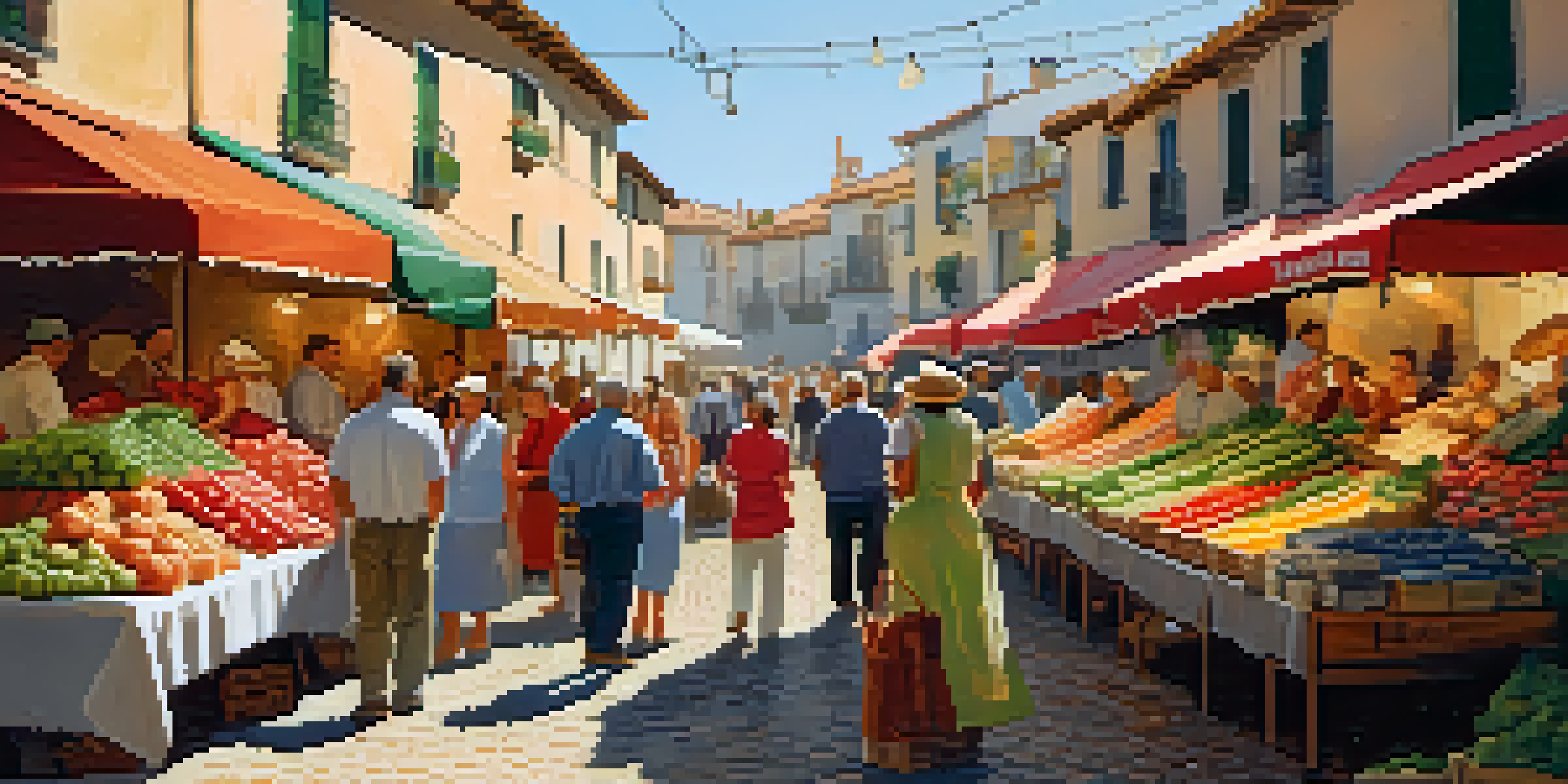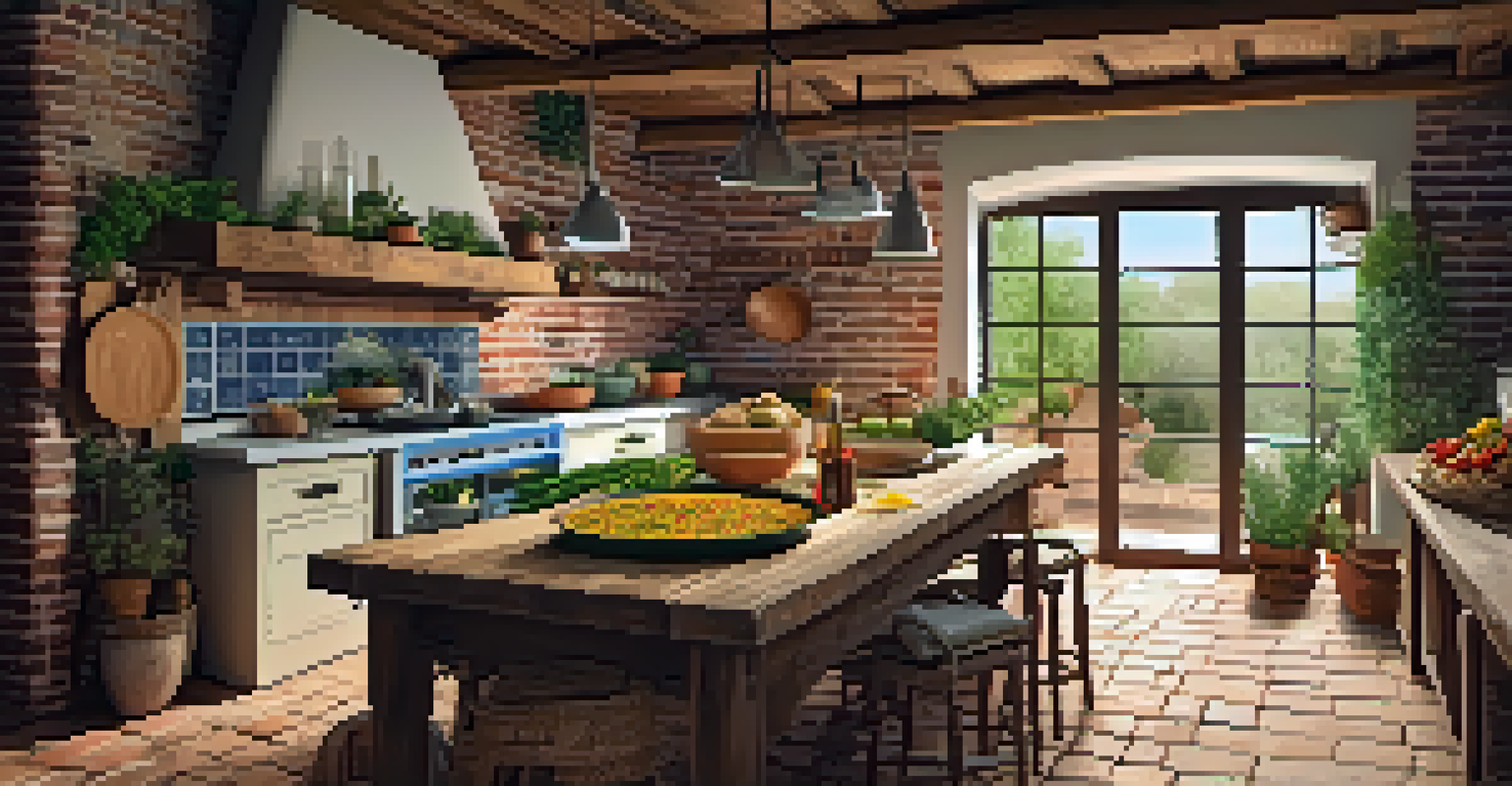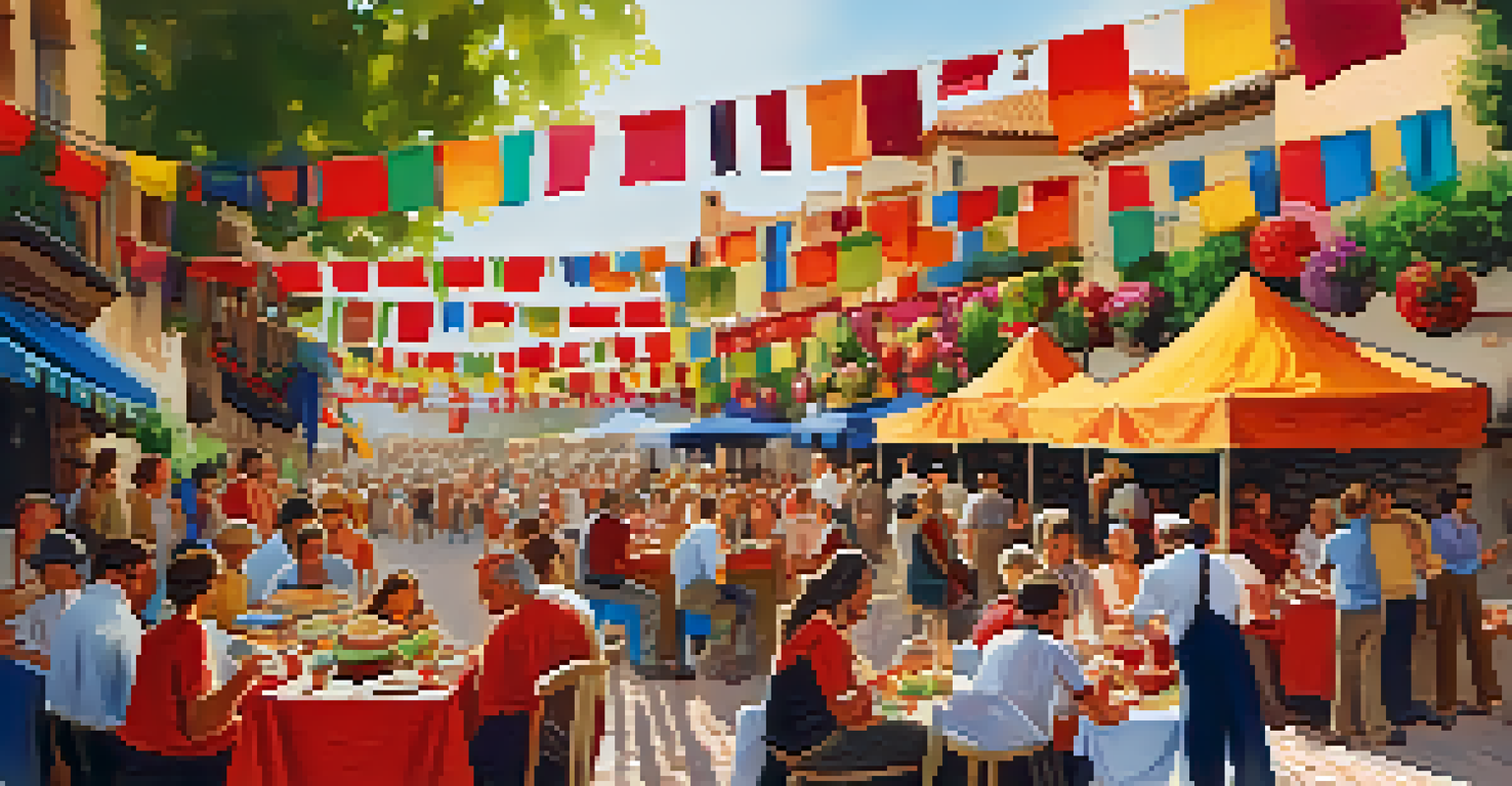Culinary Adventures: Taste the Flavors of Rural Spanish Cuisine

Introduction to Rural Spanish Cuisine: A Culinary Journey
Rural Spanish cuisine is a vibrant tapestry woven from the land's history, culture, and ingredients. Each region boasts its own unique flavors, traditions, and dishes, making it an exciting culinary adventure. From the mountains of Asturias to the fields of Andalusia, the diversity of ingredients and cooking methods offers a delightful exploration for food lovers.
Food is our common ground, a universal experience.
Imagine walking through a bustling village market, where the air is filled with the aroma of fresh produce, cured meats, and artisanal cheeses. This sensory experience is just the beginning of a journey that delves deep into the heart of Spanish culture. The stories behind the dishes often reflect the community’s heritage and the natural bounty of the surrounding landscape.
Whether you're a seasoned chef or a curious foodie, rural Spanish cuisine invites you to savor the authentic flavors that have been cherished for generations. As we embark on this culinary adventure, let's discover the traditional ingredients and beloved recipes that define this rich culinary landscape.
Essential Ingredients: The Heart of Rural Spanish Dishes
At the core of rural Spanish cuisine are its fresh, local ingredients. Staples like olive oil, garlic, and tomatoes form the base of many dishes, infusing them with flavors that are both bold and comforting. Seasonal produce, such as peppers, onions, and beans, add a vibrant touch, showcasing the bounty of the Spanish countryside.

One cannot forget the significance of cured meats, particularly jamón ibérico, which is revered across the country. This delicacy offers a rich, savory flavor that elevates any dish, embodying the essence of traditional Spanish gastronomy. Additionally, locally sourced fish and seafood, especially in coastal regions, play a pivotal role in many rural recipes.
Fresh Ingredients Drive Flavor
Rural Spanish cuisine relies on fresh, local ingredients like olive oil, garlic, and seasonal produce to create bold and comforting flavors.
Herbs and spices such as saffron, paprika, and oregano are essential in enhancing the taste of these dishes. Together, these ingredients create a symphony of flavors that transport you straight to the heart of rural Spain.
Traditional Dishes: A Taste of Regional Diversity
Each region of Spain boasts its own signature dishes, reflecting local ingredients and culinary traditions. For instance, in the north, you might savor a hearty fabada asturiana, a rich bean stew packed with chorizo and morcilla. On the other hand, the south offers gazpacho, a refreshing cold soup that showcases ripe tomatoes and fresh vegetables.
Cooking is like love. It should be entered into with abandon or not at all.
In the east, the famous paella hails from Valencia, combining rice with an array of meats and seafood, showcasing the region's agricultural heritage. Meanwhile, the Basque Country is known for its pintxos, small bites that are perfect for sharing and exploring various flavors in a casual setting.
These traditional dishes not only satisfy the palate but also tell stories of the land and its people. Each bite is an invitation to enjoy the rich tapestry of Spain's culinary heritage.
Culinary Techniques: Crafting Authentic Flavors
The preparation methods in rural Spanish cuisine are as diverse as the ingredients themselves. Simple techniques such as grilling, stewing, and roasting allow the natural flavors to shine through. For example, the slow-cooked cocido, a traditional stew, brings together meats and vegetables, creating a comforting dish that warms the soul.
Another popular technique is preserving, which is essential in a culture that values sustainability. From pickling vegetables to curing meats, these methods not only extend the shelf life of ingredients but also enhance their flavors. Think of how a jar of homemade escabeche can brighten up a meal with its tangy zest.
Regional Dishes Reflect Heritage
Each region of Spain offers signature dishes, showcasing unique ingredients and culinary traditions that tell the stories of their local culture.
Ultimately, these techniques reflect a deep respect for the ingredients and the land. By embracing traditional cooking methods, rural Spanish cuisine stays true to its roots while inviting new generations to experience its rich flavors.
The Role of Festivals: Celebrating Food and Community
Food festivals in rural Spain are vibrant celebrations that bring communities together, highlighting local ingredients and culinary traditions. Events like La Tomatina in Buñol showcase the joyful spirit of food, where tomatoes become the stars of the show. These festivals offer a unique opportunity to taste traditional dishes while enjoying lively music and dance.
Another example is Feria de Abril in Seville, where tapas take center stage. Local chefs and home cooks showcase their talents, serving up bite-sized delights that reflect the region's flavors. It's a feast for the senses, filled with laughter, conversation, and, of course, delicious food.
These festivals not only celebrate the culinary heritage but also foster a sense of community and belonging. They remind us that food is not just sustenance; it’s an experience that connects people to their roots and each other.
Sustainable Practices: Honoring the Land Through Cuisine
Sustainability is a key element of rural Spanish cuisine, as many chefs and home cooks prioritize local, seasonal ingredients. This commitment not only supports local farmers but also ensures that the dishes are fresh and flavorful. For instance, many rural communities practice organic farming, growing fruits and vegetables without synthetic pesticides or fertilizers.
Moreover, traditional cooking methods often emphasize waste reduction. Leftover ingredients are creatively transformed into new dishes, showcasing the resourcefulness of Spanish cooks. Think of how stale bread can become a delicious panzanella salad or a savory bread pudding.
Sustainability Shapes Culinary Practices
A commitment to sustainability in rural Spanish cuisine emphasizes the use of local, seasonal ingredients and waste reduction, honoring both the land and culinary tradition.
By embracing sustainable practices, rural Spanish cuisine not only honors the land but also sets an example for future generations. It highlights the importance of respecting nature while celebrating the rich flavors that come from it.
Culinary Adventures Await: Your Journey Begins
Embarking on a culinary adventure through rural Spanish cuisine is an experience like no other. Whether you’re exploring local markets, trying your hand at traditional recipes, or visiting family-run restaurants, there’s always something new to discover. Each dish tells a story, offering a glimpse into the culture and history of the region.
Don’t forget to engage with the locals; their passion for food and hospitality often leads to unforgettable experiences. You might find yourself enjoying a homemade meal at a family’s table or learning a secret recipe passed down through generations. These interactions enrich your culinary journey and create lasting memories.

So, pack your bags and get ready to taste the vibrant flavors of rural Spain. Your palate is in for an adventure that will leave you craving more long after your journey ends.